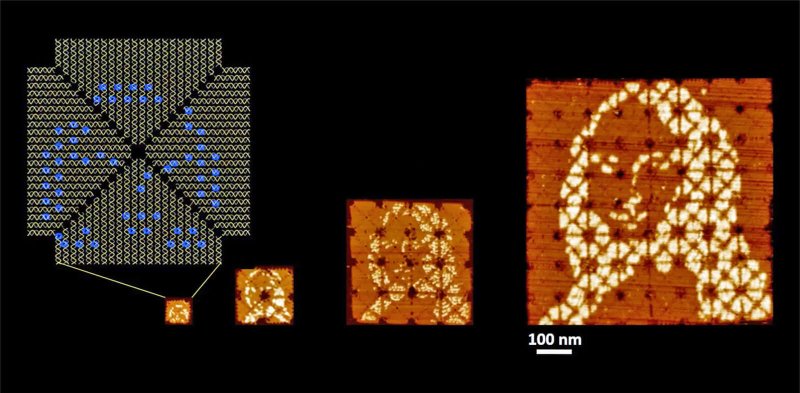Researchers from Caltech have developed an inexpensive, facile technique for creating very large self-assembling DNA origami structures with customisable patterns. The work, published in Nature [December 6], is the first time that DNA origami has been used to build such large structures and provides other researchers with a relatively simple method for creating their own. The team demonstrated the success of their technique by using it to recreate Leonardo da Vinci’s iconic Mona Lisa painting.
DNA origami was a technique that was originally developed in 2006 and involves combining one long strand of DNA with many smaller one, to fold the complex into a predetermined shape. The smaller DNA fragments, known as staples, bind to specific regions of the long strand, as determined by Watson and Crick DNA binding pairs, and pull the long strand into a specific conformation. This single structure is known as a DNA origami ‘tile.’ Each tile is very small, but multiple tiles can be bound together into a larger structure like a mosaic.
…
“Other researchers have previously worked on attaching diverse molecules such as polymers, proteins, and nanoparticles to much smaller DNA canvases for the purpose of building electronic circuits with tiny features, fabricating advanced materials, or studying the interactions between chemicals or biomolecules,” said [researcher Philip] Petersen. “Our work gives them an even larger canvas to draw upon.”
Read full, original post: Reproducing Works of Art with DNA Origami































